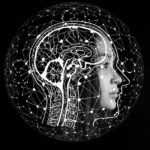In 1983, psychologist Christopher Gillberg posed a provocative question to the readers of the British Journal of Psychiatry: Could autism and anorexia nervosa share underlying causes? Gillberg’s curiosity came in part from his observations of three autistic boys whose female cousins all had the eating disorder, which is characterized by food restrictions, low body weight, an intense fear of gaining weight and a distorted body image.
Gillberg, professor of child and adolescent psychiatry at the University of Gothenburg in Sweden, initially suggested that anorexia is the ‘female form of autism.’ Although that idea wasn’t entirely accurate, his suspicions that eating disorders and autism are linked have borne out: People with anorexia are more likely to be autistic than those without it, studies show. There are fewer data demonstrating that autistic people are at particularly high risk for eating disorders, but experts say it’s likely.
Here is what researchers know about the overlap between the two conditions and what they are still working to find out.
How often do anorexia and autism overlap?
Estimates vary, though most researchers agree that roughly 20 percent of people with anorexia are autistic. Both conditions are rare — about 1 percent of people are autistic and 0.3 percent have anorexia — and most research so far has examined the prevalence of autism in people with anorexia, not the reverse.
Among 60 women receiving treatment for an eating disorder at a clinic in the United Kingdom, for example, 14 of them, or 23 percent, scored above the diagnostic cutoff on a test called the Autism Diagnostic Observation Schedule (ADOS). Similarly, about one-third of people with anorexia have been diagnosed with autism, according to a long-running study that has followed 51 people with anorexia and 51 controls in Sweden since the 1980s. Because of changes in how autism is diagnosed, some participants met the criteria for a diagnosis at one time point and not at others, but those with anorexia still tend to score higher on a test of social-communication difficulties than controls do.
Population studies confirm the link. Children with social difficulties at age 7 and 11 are more likely than their peers without such difficulties to engage in disordered eating behaviors, such as fasting or using diet pills, at age 14, according to data from more than 5,000 children born in the U.K. And among 1.7 million people in Denmark’s national health registry, the likelihood of having autism is more than 15 times higher among people with anorexia than among those without; likewise, autistic people are more than five times as likely to have anorexia as non-autistic people. But having depression also increases the likelihood of having autism in this cohort, so it’s unclear whether autism has a unique link to anorexia or simply increases the likelihood of having a psychiatric condition.
Parsing the overlap between the two conditions is complicated by the fact that starvation can cause brain changes that result in autism-like behaviors, such as social difficulties and problems with emotion processing. It may be difficult to accurately diagnose autism in people with severe anorexia, says William Mandy, professor of clinical psychology at University College London in the U.K. Among 40 adolescent girls undergoing intensive treatment for anorexia, for example, 21 scored above the diagnostic cutoff on the ADOS, but parents of only 4 reported seeing autism traits in childhood — necessary for an autism diagnosis. This suggested that for most of the girls, the eating disorder had caused new behaviors that mirror autism. It’s also possible the girls’ autism had been missed in childhood. “It’s still an ongoing debate,” says Heather Westwood, clinical psychologist in eating disorders at King’s College London.




